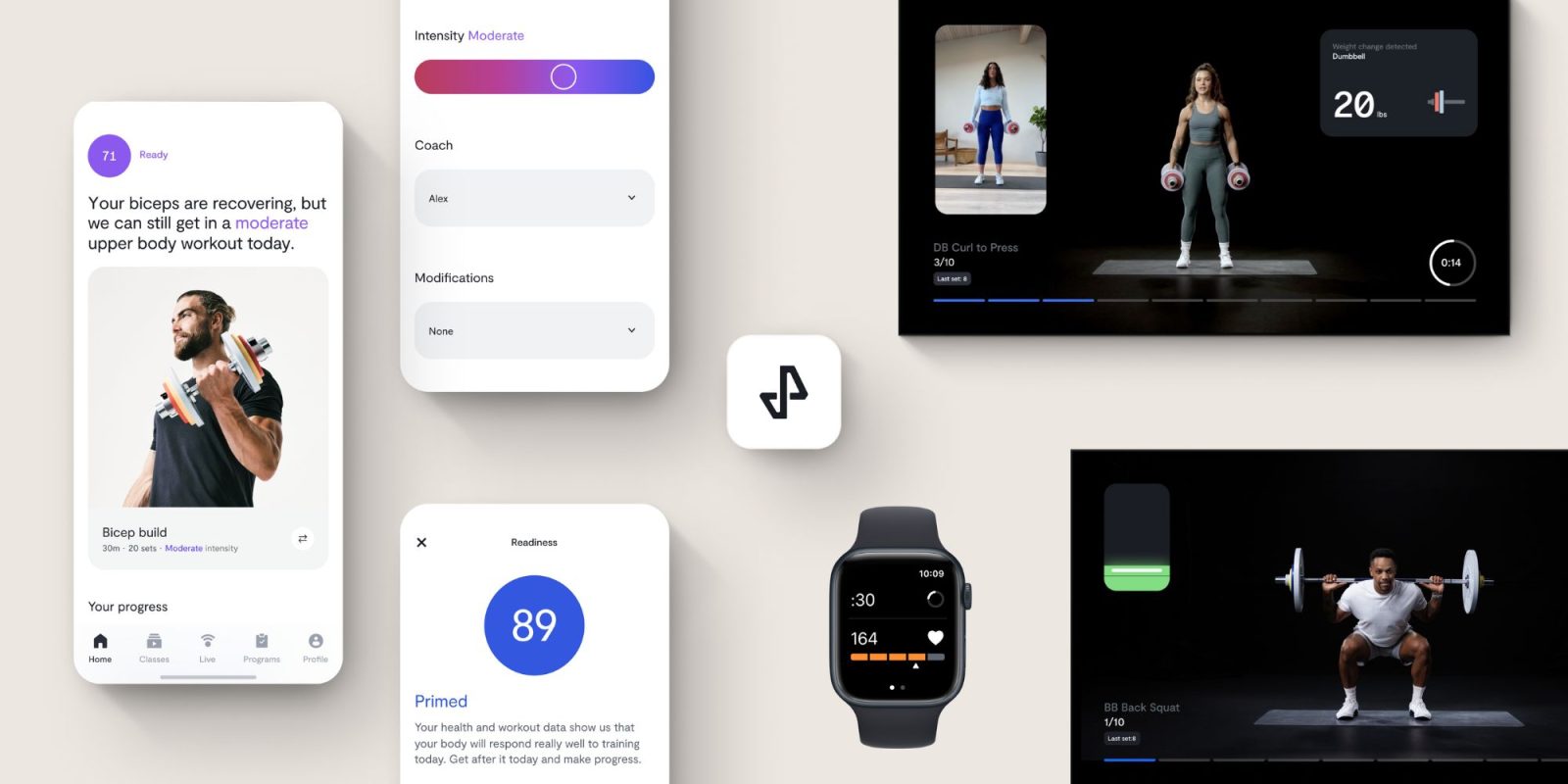
Connected fitness company Tempo is releasing its largest update ever today. An almost overwhelming amount of new features, customization, and data tracking have been added, leveraging the tech of the iPhone and AI. In fact, this feels less like an update and more like an entire relaunch of the Tempo home gym platform. Let’s dig into everything you should know!
The primary aim of Tempo’s suite of new features is to bring together biometric data from wearables, body scanning, and 3D camera tech to create a fully individualized training experience.
Tempo CEO and cofounder, Moawia Eldeeb, says:
No matter your fitness level, every workout is optimized to your body’s changing needs, every time you come back to train with us. This level of hyper-personalization is integral to effective training that keeps you engaged, challenged, and empowered with tangible progress. No more guesswork, no more plateaus – Tempo evolves with you to help you get stronger every day.
A quick note about this update. It should be available today for owners of the Tempo Studio, Tempo Move, and Tempo Core.

Readiness score
Tempo can now use your individual health data to determine a daily readiness score. This score is based on your sleep quality, heart rate variability (HRV), resting heart rate, and recent fitness activity (including both workouts done with and outside of Tempo).
To get a readiness score, you do need to wear an Apple Watch, WHOOP, Garmin, or other wearables that can deliver this data to Apple Health.
As a side note, Tempo has also figured out how to get the Apple Watch to automatically measure HRV data upon waking. This is something that the Apple Watch does not do by itself and usually requires you to manually get the data. Automatic morning HRV tracking is also something I have never seen any other Apple Watch app (out of dozens I have tried) be able to do.
After getting your daily readiness score, Tempo will then provide a unique and personalized daily workout recommendation based on your goals.
We’ll dig into exactly how that works soon, but first, there is another health-tracking feature we need to discuss.
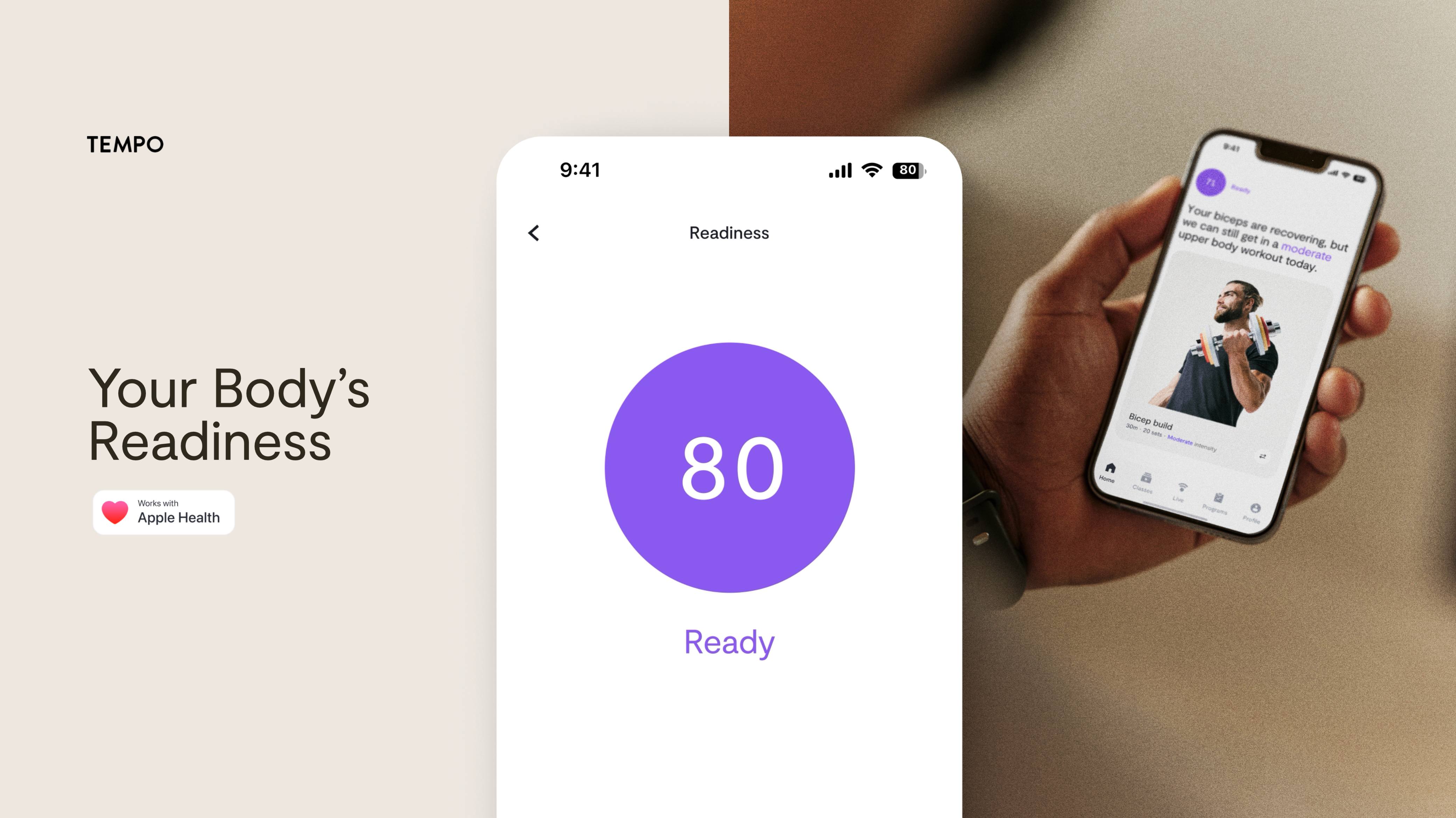
3D body composition scan
Tempo has now added a new in-app 3D body composition scan. Using the camera on the iPhone, you can now take a quick scan to get data like body fat percentage, lean mass, and even the circumference of various body parts.
So yes, you can even get data about whether one arm has more muscle mass than another. What is even more interesting is that this scan can be used to further personalize your workouts. For example, if Tempo notices a fairly large discrepancy between limb sizes, it may include more single-arm or single-leg exercises for you to help create better balance.
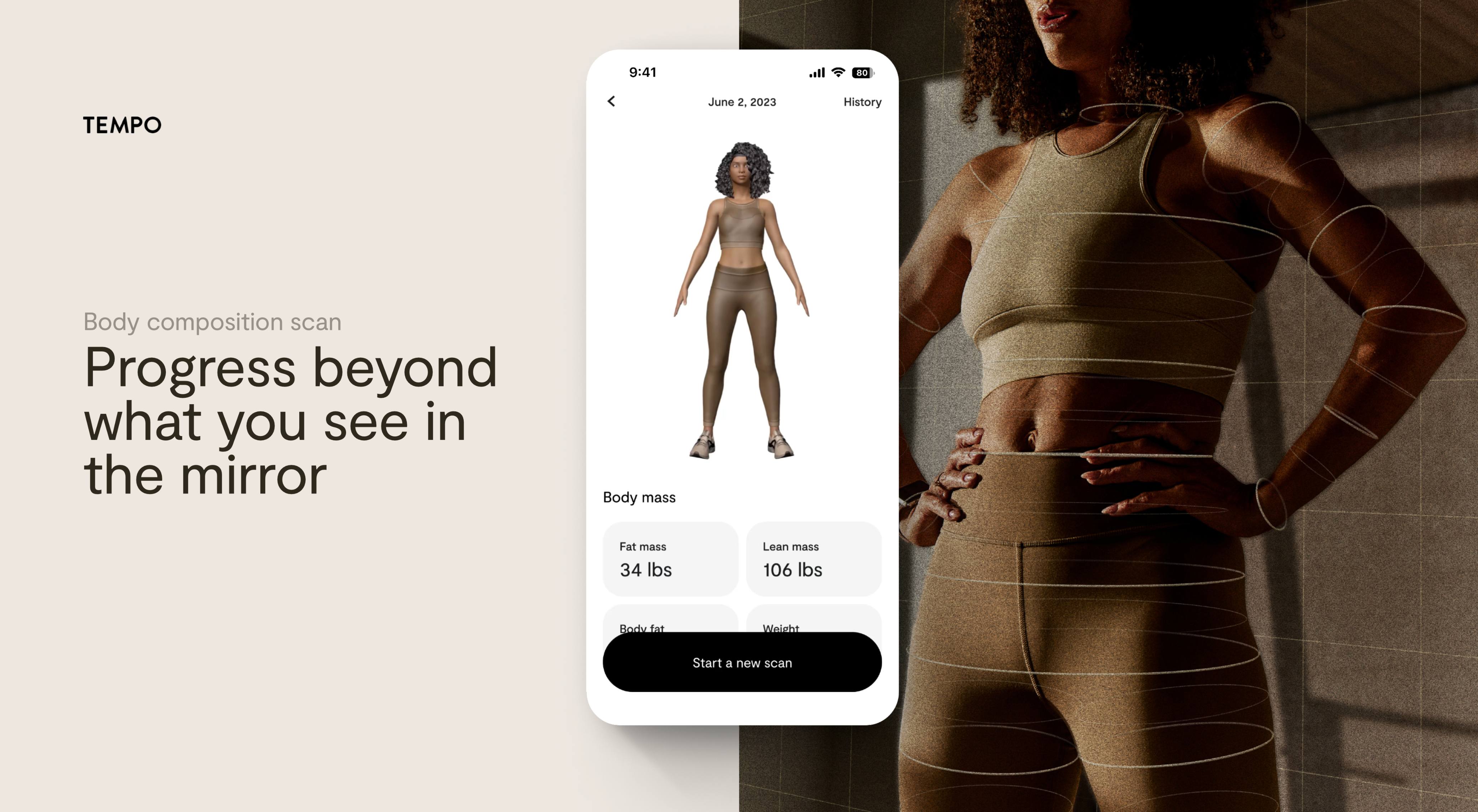
Adaptive workout plans
One of the biggest new changes coming to Tempo is how workout plans are created. No longer are they generalized, static, and unchanging. The new plans adapt to you in almost every way.
First, Tempo will ask you if there are certain areas you’d like to prioritize more than others, as well as your preference for lifting weights and conditioning. Then, Tempo will get to work designing a program that adapts around you.
For example, let’s say I want to prioritize my upper body. Tempo will then ensure upper body is what I work on first each week, just in case that is all I have time for. Once I complete that, Tempo may suggest a lower-body or full-body workout next.
The workout plan adapts to not only how many times I end up working out that week but also how long the workouts are. Tempo will give personalized weekly goals (e.g., number of sets to complete for a body part) and will help adjust the workouts to get you to that goal.
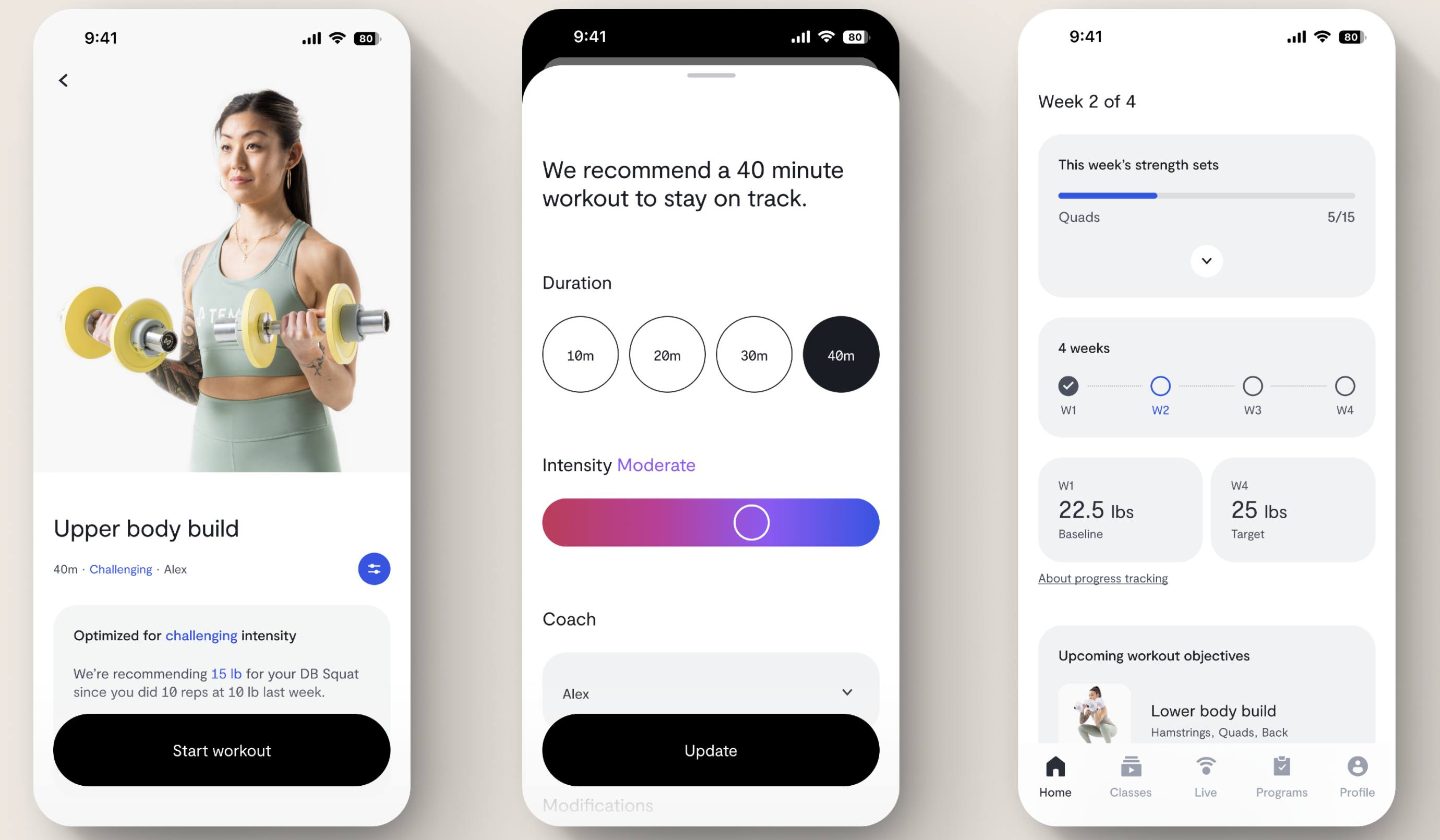
Custom workouts
These adaptive workout plans do not simply suggest one of Tempo’s hundreds of prerecorded workouts either. The workouts themselves are customized around your goals, workout history, time available, and even your daily readiness score.
Given that the workouts are also coached, I honestly have no idea how Tempo is doing this, and I am eager to get in and test it all out for myself. (Check back in a few weeks for a review!) Evidently, Tempo has found a way to mix and match thousands of hours of coach footage to be able to deliver this customized workout experience.
So whether you have 10 or 40 minutes to work out, prefer one coach over another, or have a low or high readiness score, a custom workout will be generated that allows you to progress from one week to the next.
Eldeeb even told me that they plan on being able to use your results to help determine which movements are most effective for you. So custom workouts and plans should become more personalized and more effective over time.
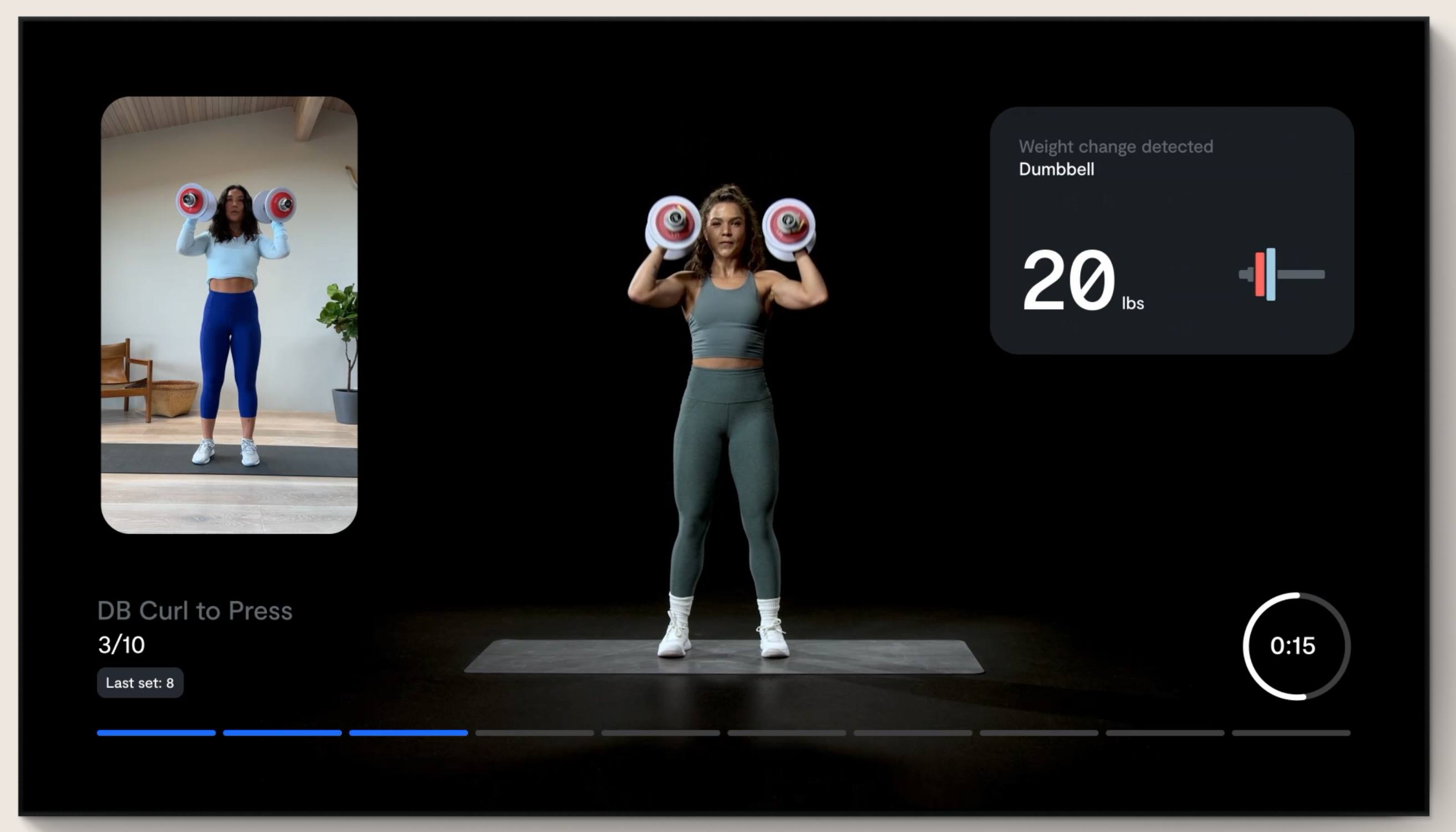
Dynamic rest
Tempos revamped focus on personalization doesn’t end with just providing custom workouts either. The sessions themselves will even adjust while you take them!
One example of this is with what Tempo is calling Dynamic Rest. If you have a heart rate monitor paired, like the Apple Watch, Tempo will be able to adjust rest times between lifting sets. If your heart rate is too high, the class will automatically pause to give you more rest time. The session also automatically resumes once your heart rate has dropped to where it should be for the set.
Another quick side note here: the extended rest based on heart rate is optional. So you can always manually resume the class if you do not want the extended rest.
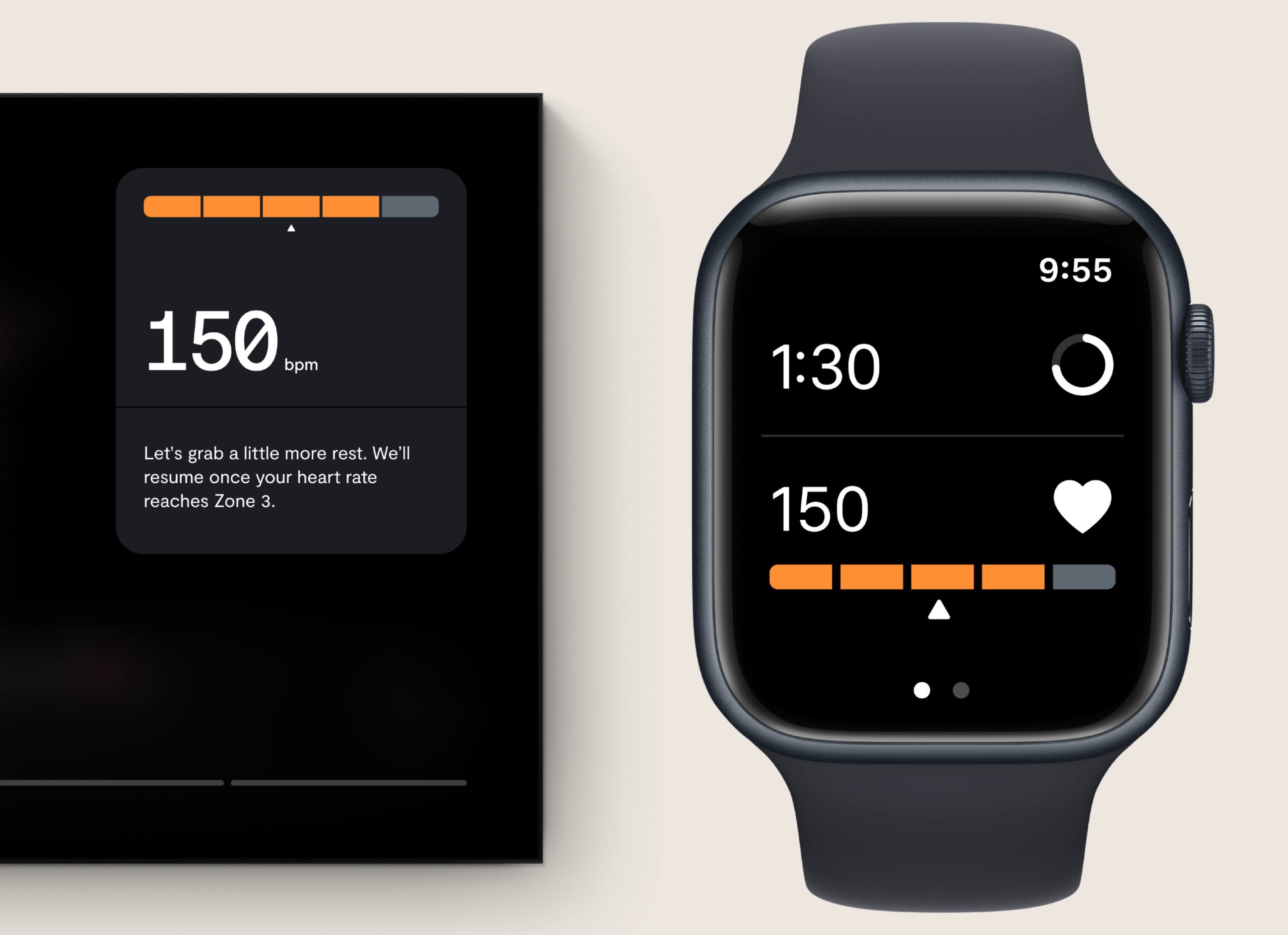
Dynamic weight and rep targets
Tempo already had the ability to automatically record how much weight you are using and how many reps you complete. But they are taking it further by using a combination of the latest in exercise science and AI integration.
First of all, Tempo will now be utilizing reps in reserve (RIR) within its workout programming. If you haven’t heard of RIR, it is a popular way to present workout programs based on how many reps a person feels they can perform with a given weight. So, for example, “5 reps with a RIR of 3” means do five reps with a weight that you feel like you could do eight reps of if you really had to. It may sound complicated, but it is fairly simple and effective once you grasp it.
Tempo will now be able to analyze and predict your RIR to automatically adjust both the suggested number of reps and weight during your workout. It supposedly will use at least three factors to help determine your RIR.
- Movement speed: Tempo will look at the speed of each rep to help predict how many more you can do.
- Heart rate: Tempo can look at heart rate increases in real time, which can help with the analysis.
- Manual feedback: On occasion, Tempo will ask you how many more reps you felt you could have done. (This can be answered on an Apple Watch if you are wearing one.)
All of this will enable Tempo to have dynamic weight and rep targets. For example, if you are going too light, Tempo may suggest a heavier weight. Or in some cases, Tempo may increase or decrease the reps per set, depending on your performance.
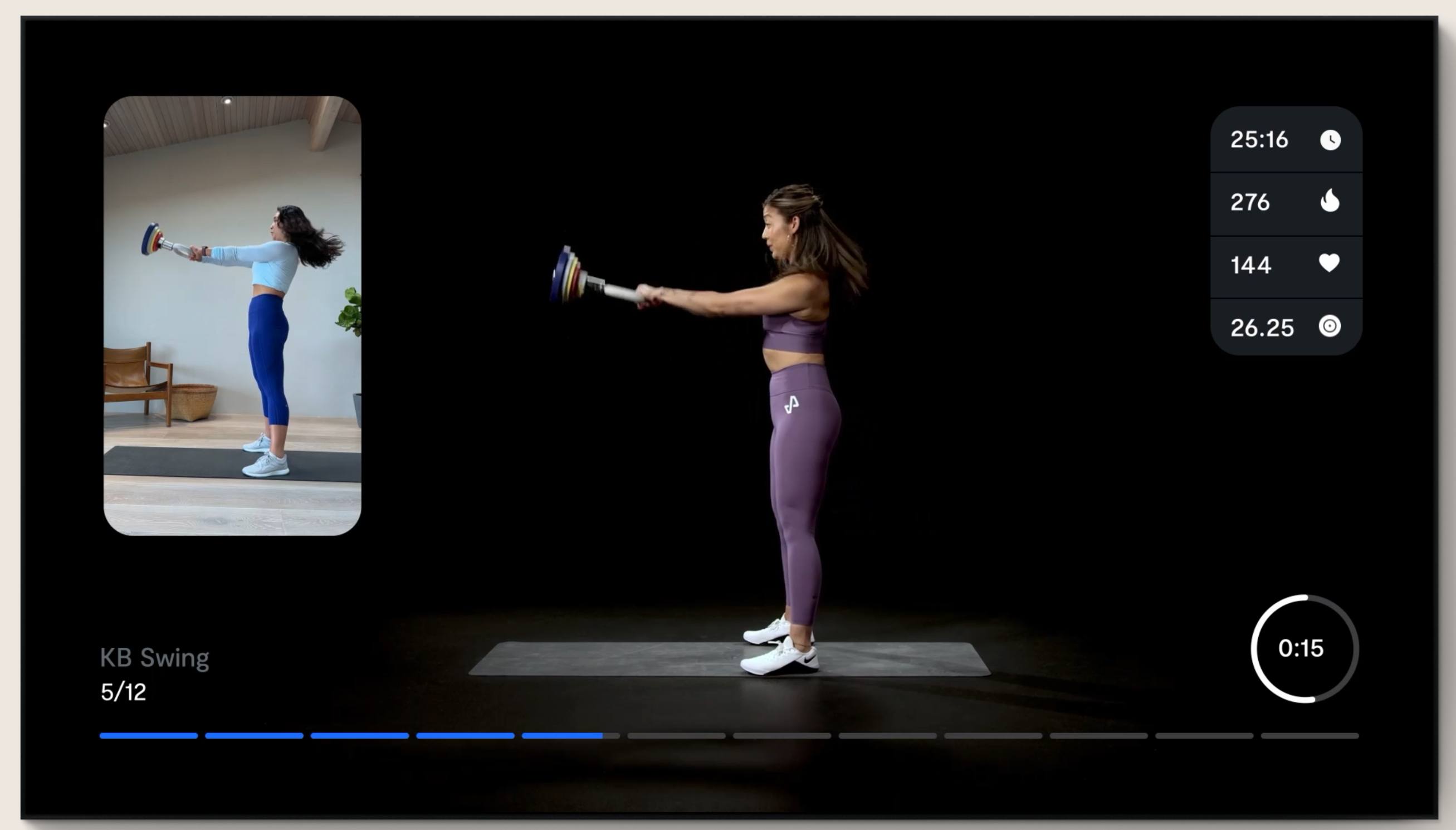
Expanded movement tracking
According to Tempo, the new update comes with a significant improvement with its range of motion and movement tracking. Previously, the only range of motion tracking available was with squats, so you could see if you were hitting your goal depth in real time. Now that same range of motion feedback will be available for a variety of other movements. Additionally, Tempo says they now have 50 exercises in the weight recognition library.
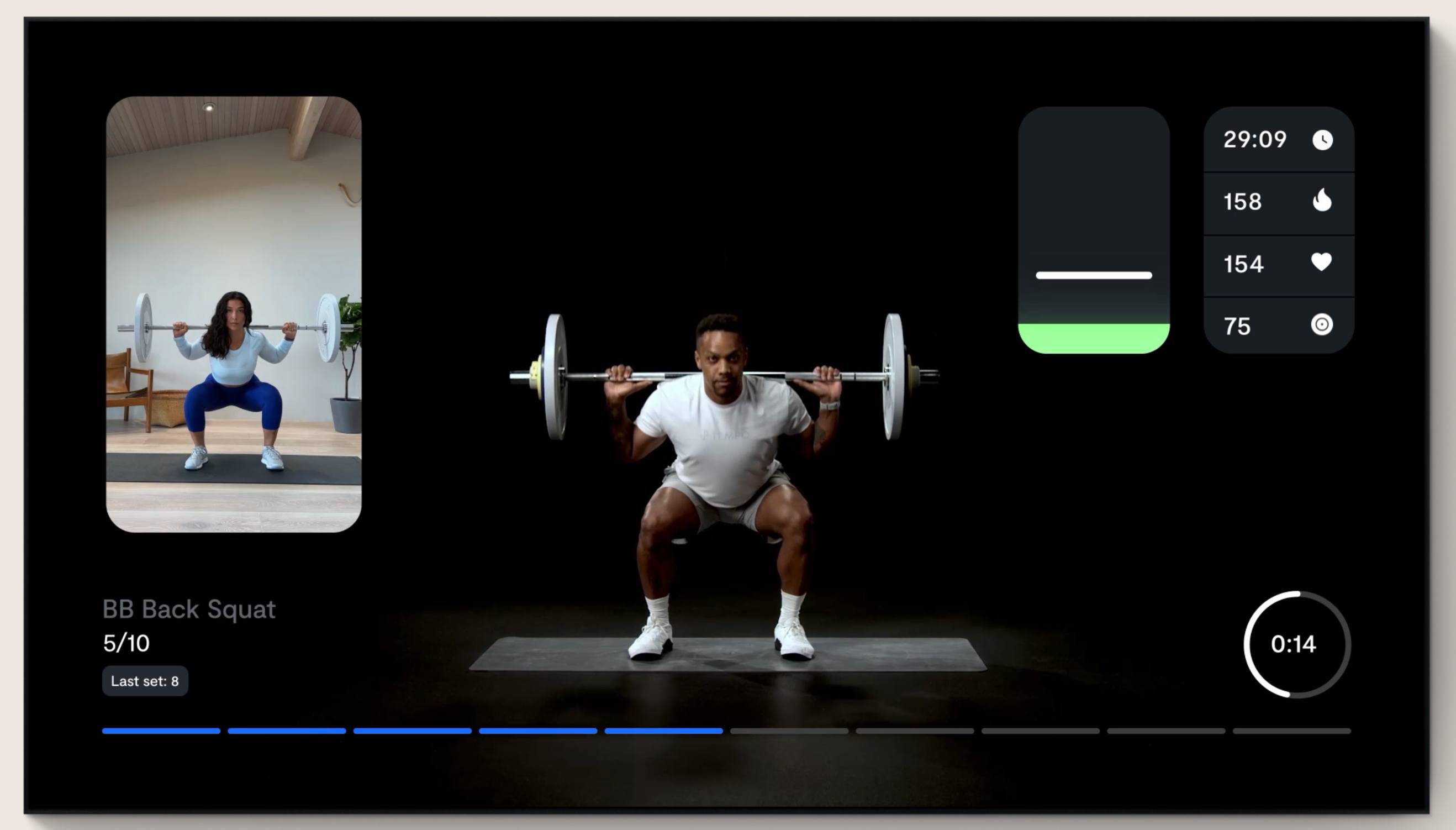
Connect The Watts’ Take
To be quite honest, this update took me by surprise. Tempo has been pretty quiet this past year in terms of adding new features, and I would never have predicted they were cooking up what seems to be an entire revamp of the program.
See, what makes me excited about connected fitness is its potential to evolve in two areas:
- The first is in making fitness more fun and entertaining. So far, almost all of the connected fitness companies have done a great job here. Providing either entertaining instructors, music, or gamification to help us stay motivated to keep working out.
- The second area is in using tech to fully personalize workouts and deliver results far better than what was previously possible without an expensive personal trainer. It is this area where I feel like connected fitness has so far failed to provide any meaningful advancement.
A likely reason that very few connected fitness companies have made significant progress in this second area is because it also clashes with the first. How can you both provide a high level of personalization alongside a prerecorded or live instructor?
The best attempt I have found so far was with the Ergatta rower. But even then, Ergatta just scratched the surface, and I have not seen any significant advancement from them in quite some time.
I have seen lots of fitness tech behind the scenes that promise to be huge game changers, but none have actually become available so far.
However, Tempo may have just found a way.
If Tempo can deliver on what they promise here, it will be the most impressive update I have ever seen on any connected fitness platform. A connected fitness product that can create and personalize well-thought-out workouts in real time while the user is also being taught by a great instructor – this is why I am so excited!
Make sure to keep checking in with Connect The Watts for our upcoming review.
For a limited time, Tempo is offering 20% off for readers of Connect The Watts.
Use discount code “COLIN20” here.
Suggested Articles:
FTC: We use income earning auto affiliate links. More.
